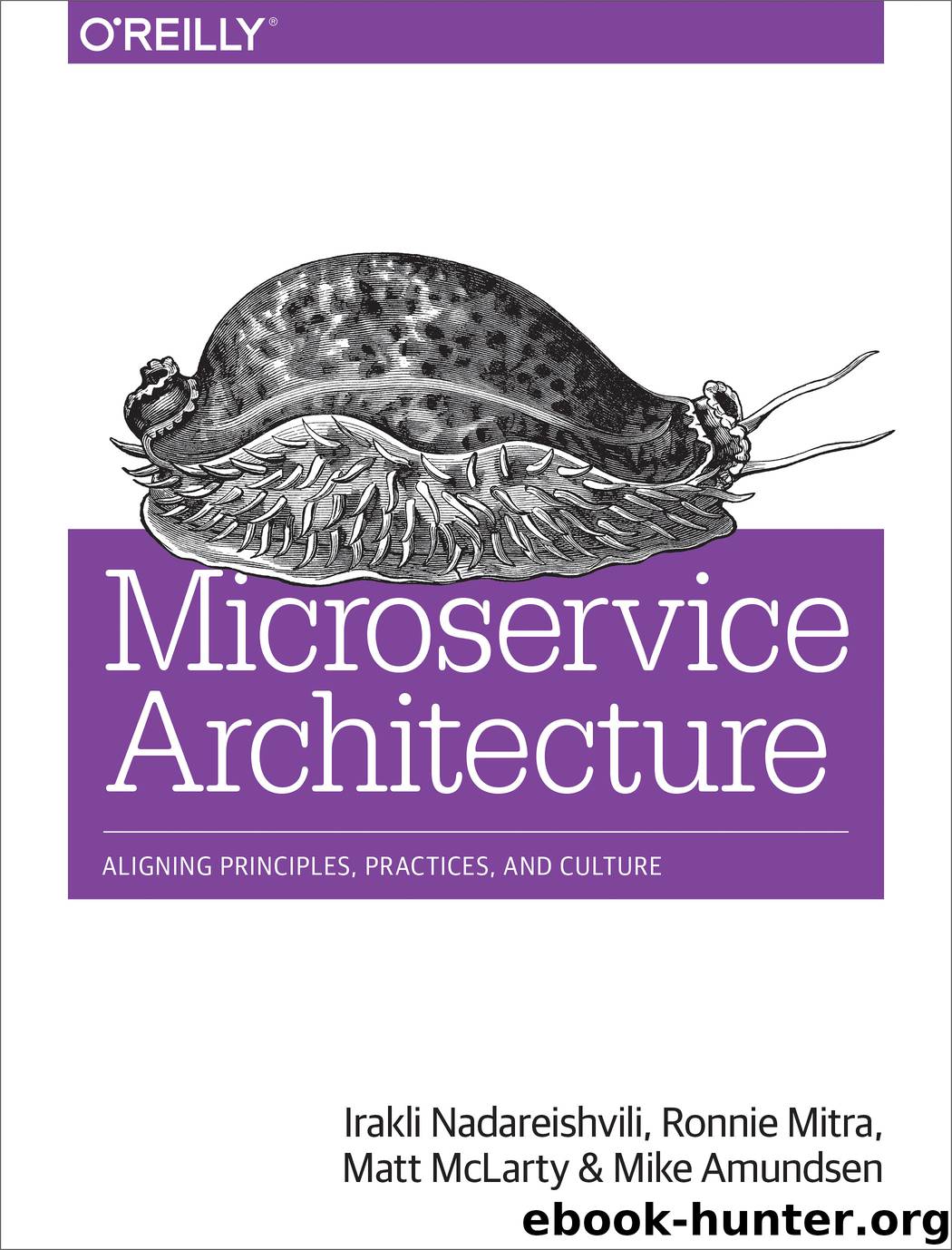Microservice Architecture by Irakli Nadareishvili Ronnie Mitra Matt McLarty & Mike Amundsen

Author:Irakli Nadareishvili, Ronnie Mitra, Matt McLarty & Mike Amundsen
Language: eng
Format: epub
Publisher: O'Reilly Media, Inc.
Published: 2016-07-28T16:00:00+00:00
Essentially, what we see people doing when they introduce the microservices way into their companies is that they begin to decompose existing components into smaller parts in order to increase their ability to improve the quality of the service faster without sacrificing reliability.
There are many ways to decompose a large system into smaller subsystems. In one case we may be tempted to decompose a system based on implementation technology. For instance, we can say that all computationally heavy services need to be written in C or Rust or Go (choose your own poison) and therefore they are a separate subsystem, while I/O-heavy features could certainly benefit from the nonblocking I/O of a technology such as Node.js and therefore they are a subsystem of their own. Alternatively, we can divide a large system based on team geography: one subsystem may be written in the US, while others may be developed and maintained by software teams in Africa, Asia, Australia, Europe, or South America. Intuitively, giving a self-contained subsystem for development to a team that is located in one place is well-optimized. Another reason you may decide to divide a system based on geography is that specific legal, commercial, and cultural requirements of operating in a particular market may be better understood by a local team. Can a software development team from New York accurately capture all the necessary details of an accounting software that will be used in Cairo?
In his seminal book Domain-Driven Design, Eric Evans outlines a fresh approach to determining boundaries of subsystems in the context of a larger system. In the process, he offers a model-centric view of software system design. As we’ve pointed out in this book, models are a great way to view a system. They provide an abstract way to look at something—a way that highlights the things we are interested in. Models are a point of view.
Download
This site does not store any files on its server. We only index and link to content provided by other sites. Please contact the content providers to delete copyright contents if any and email us, we'll remove relevant links or contents immediately.
| AI & Machine Learning | Bioinformatics |
| Computer Simulation | Cybernetics |
| Human-Computer Interaction | Information Theory |
| Robotics | Systems Analysis & Design |
Algorithms of the Intelligent Web by Haralambos Marmanis;Dmitry Babenko(9832)
Test-Driven Development with Java by Alan Mellor(7645)
Data Augmentation with Python by Duc Haba(7534)
Principles of Data Fabric by Sonia Mezzetta(7307)
Learn Blender Simulations the Right Way by Stephen Pearson(7227)
Microservices with Spring Boot 3 and Spring Cloud by Magnus Larsson(7058)
RPA Solution Architect's Handbook by Sachin Sahgal(6454)
Jquery UI in Action : Master the concepts Of Jquery UI: A Step By Step Approach by ANMOL GOYAL(6446)
The Infinite Retina by Robert Scoble Irena Cronin(6161)
Hadoop in Practice by Alex Holmes(6135)
Big Data Analysis with Python by Ivan Marin(5882)
Life 3.0: Being Human in the Age of Artificial Intelligence by Tegmark Max(5474)
Pretrain Vision and Large Language Models in Python by Emily Webber(4839)
Infrastructure as Code for Beginners by Russ McKendrick(4618)
WordPress Plugin Development Cookbook by Yannick Lefebvre(4337)
Functional Programming in JavaScript by Mantyla Dan(4216)
The Age of Surveillance Capitalism by Shoshana Zuboff(4209)
Embracing Microservices Design by Ovais Mehboob Ahmed Khan Nabil Siddiqui and Timothy Oleson(4109)
Applied Machine Learning for Healthcare and Life Sciences Using AWS by Ujjwal Ratan(4088)
